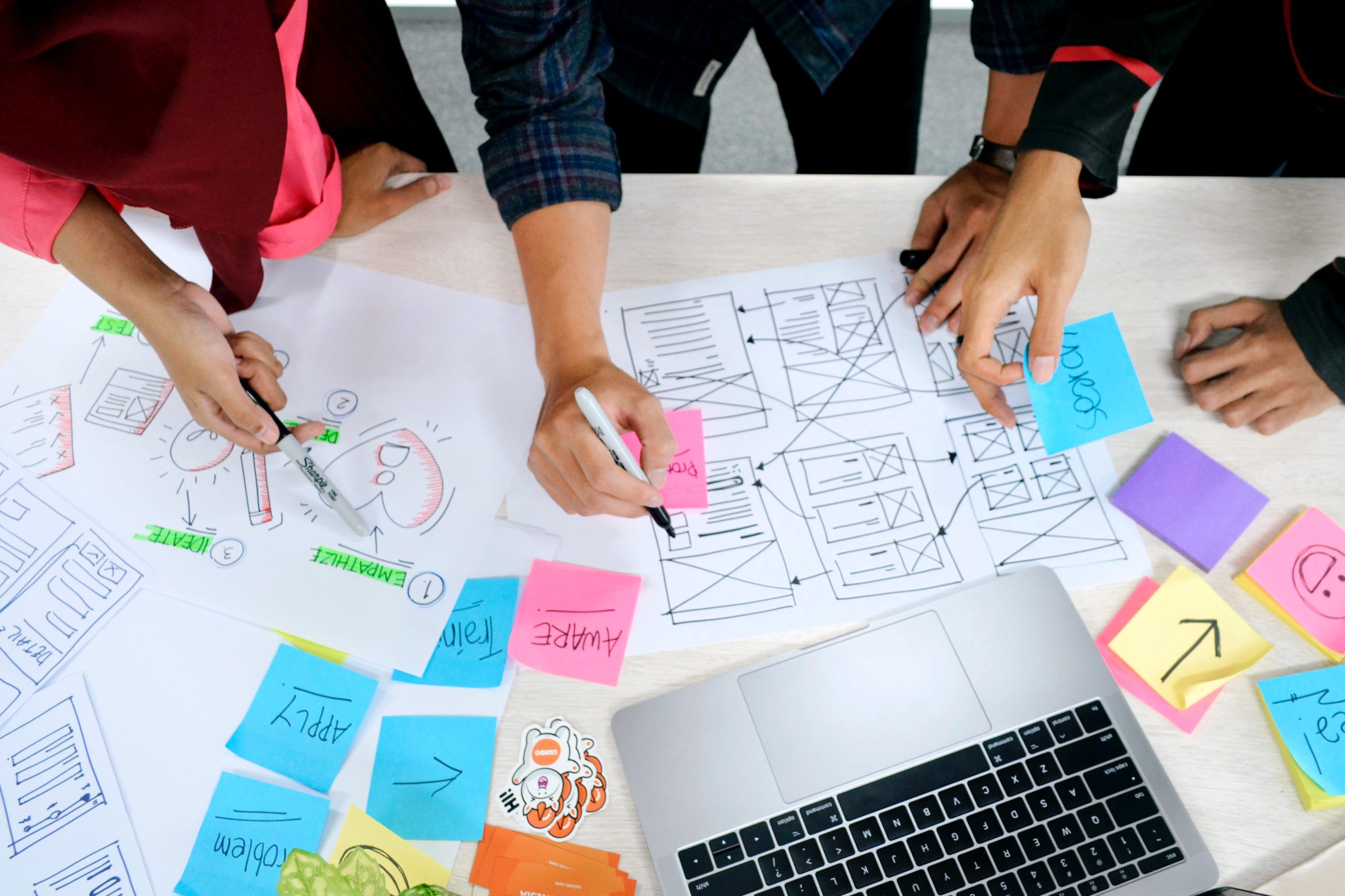It’s not about assigning blame, but about learning from experiences and making the team and the product better. A successful retrospective fosters an open and safe environment where team members feel comfortable sharing their perspectives and contributing to actionable insights.
A UX Retrospective can combine a presentation with a workshop in order to first tell the story (context) and then gather feedback (using Design Thinking).
Here’s a breakdown of what makes a UX Retrospective effective:
1. Clear Goal and Purpose:
- Establish a clear objective for the retrospective, such as improving team collaboration, enhancing user experience, or refining design processes.
- This helps focus the discussion and ensure that the team is aligned on what they want to achieve with the exercise.
2. Open and Honest Communication:
- Create a safe and inclusive environment where everyone feels comfortable sharing their thoughts and experiences.
- Encourage open dialogue and avoid personal attacks or blame. It’s about experiences and learning.
- Facilitate active listening and ensure that all voices are heard.
3. Structured Discussion:
- Use a structured format to guide the discussion, such as the “What Went Well?” “What Didn’t Go Well?” and “What Did We Learn?” format. The Three Ws.
- Alternatively, consider using techniques like the “4Ls” (Loved, Loathed, Longed for, Learned) or the “Stop, Start, Continue” method.
- These structures help to organise the discussion and ensure that multiple aspects of the project are considered.
4. Focus on Improvement:
- The main goal is to identify areas for improvement and develop actionable steps to address them.
- Prioritise findings based on their impact and ease of implementation.
- Define clear steps that can be taken to address the issues identified.
5. Actionable Insights:
- Translate the insights from the retrospective into concrete actions.
- Ensure that these actions are documented and assigned to specific team members.
- Regularly revisit the action items to track progress and ensure that they are being implemented.
6. Cross-Functional Engagement:
- Involve all relevant team members, including UX designers, researchers, developers, product owners, and product managers.
- This ensures that everyone has an opportunity to contribute their perspectives and that the lessons learned are widely shared and understood.
7. Facilitation and Documentation:
- A facilitator can guide the discussion, to ensure that all perspectives are heard, and keep the conversation focused.
- And finally, document the key findings and action items to create a record of the retrospective and facilitate future discussions.
You can do UX Respectives on a regular cadence so the format becomes familiar, and therefore the feedback becomes increasingly relevant and useful.
